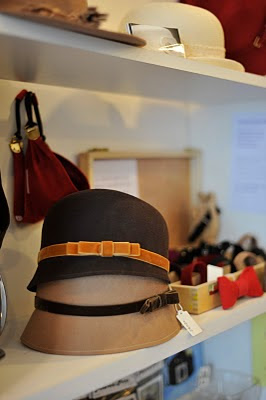 Anyways, I just completed something that I didn't do for Self-Stitched September or Me-Made-March '11: a me-made clothing inventory. Although it wasn't a conscious decision to avoid doing so, I don't think I bothered in September because I was fresh my clothing cull. Looking at my depleated ranks of garments compared to my Me-Made-May's inventory, in which I found a lot of pride, would have been a bit depressing. And March was just cold. My aim was just to get through the month without wearing the exact same outfit (that outfit consisting of most my clothes all layered up) each day.
Anyways, I just completed something that I didn't do for Self-Stitched September or Me-Made-March '11: a me-made clothing inventory. Although it wasn't a conscious decision to avoid doing so, I don't think I bothered in September because I was fresh my clothing cull. Looking at my depleated ranks of garments compared to my Me-Made-May's inventory, in which I found a lot of pride, would have been a bit depressing. And March was just cold. My aim was just to get through the month without wearing the exact same outfit (that outfit consisting of most my clothes all layered up) each day.But over the last few months I've been steadily beavering away at the sewing machine, churning out garments whilst motivated purely by whim rather than identifying holes in my wardrobe. I thought it'd be interesting to see how things are shaping up. With a high percentage currently in the laundry and not possessing sufficient hangers, I decided not to physically collate my me-mades, like I did back in April '10. Instead, I can offer some stats:
- 4 pairs of trousers
- 7 skirts
- 3 shorts
- 6 blouses/woven tops
- 7 t-shirts/jersey tops
- 6 me-made or refashioned sweatshirts/knitwear
- 5 dresses
- 3 coats/jackets
- 3 vests (for layering under my outfits during the day or as part of my sleepy-time wear)
- enough pants (undies) if I keep up with the laundry
- 2 pyjama bottoms
- 2 jersey tops for sleeping in
 So there we have it. It sounds like a decent amount, but I'm not sure if it's all particularly mix and match-able, in terms of silhouette, style or colour. Looking at my stock in the flesh, I can see some gaps already, but I'll see how I get on. It's going to be a learning curve for sure, which of course is the whole point of these shenanigans!
So there we have it. It sounds like a decent amount, but I'm not sure if it's all particularly mix and match-able, in terms of silhouette, style or colour. Looking at my stock in the flesh, I can see some gaps already, but I'll see how I get on. It's going to be a learning curve for sure, which of course is the whole point of these shenanigans!Aside from my pledge to wear both pairs of high-waisted shorts this month in the hope that I will begin to feel comfortable in them, what other aims do I have for MMJune '11? Well, I feel I ought to get some wear from my expanding range of dresses and skirts, or just stop frikkin' making them! I'd like to come up with some new combos of garments rather than relying on my tried and tested set patterns. Plus, identifying those gaps, as previously mentioned, and hopefully filling a couple of them up by sewing some things during the month. And after my free time analysis/revelation yesterday, I really should aim to spend more time blogging this month, as those documentation posts tend to push the other stuff I like to write about here out the way a bit.
If you are participating in this challenge(or even if you are not!), what are your aims for June? I wish you all a very happy and enlightening month! xxx




 As I posted recently
As I posted recently






























